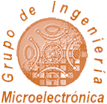
Web Map

Location

News

Santander Info

|
| GIM>Research>project>FP7 611146 CONTREX... |
| PROJECT: |
| | FP7 611146 CONTREX |
| |  |
| Select this link to see PUBLICATIONS within this project |
| |
| Title: | FP7 611146 CONTREX |
| Acronym: | |
| Payer: | European Commission |
| Partners: | OFFIS, ST, GMV, Cobra, EuroTech, Intecs, IXtronix, EDALab, Docea, PoliMi, PoliTo, KTH, ECSI, ST-Polito |
| Budget: | 391336€ |
Years, begin: | 2013 |
end: | 2016 |
| Director: | Eugenio Villar |
| R&D Lines: |
Design and verification of HW/SW embedded systems
|
| Staff: |
Eugenio Villar
Pablo Pedro Sánchez
Héctor Posadas
Francisco José Alcalá
Pablo Peñil
Fernando Herrera
|
| Description: | Up to now mission & safety critical services of SoS (Systems of Systems) have been running on dedicated and often custom designed HW/SW platforms. In the near future such systems will be accessible, connected with or executed on devices comprising off-the-shelf HW/SW components. Significant improvements have been achieved supporting the design of mixed-critical systems by developing predictable computing platforms and mechanisms for segregation between applications of different criticalities sharing computing resources. Such platforms enable techniques for the compositional certification of applications’ correctness, run-time properties and reliability.
CONTREX addressed these important activities with an analysis and segregation along the extra-functional properties real-time, power, temperature and reliability. These properties will be a major cost roadblocks when
1.scaling up the number of applications per platform and the number of cores per chip,
2.in battery powered devices or
3.switching to smaller technology nodes.
CONTREX enabled energy efficient and cost aware design through analysis and optimisation of real-time, power, temperature and reliability with regard to application demands at different criticality levels. To reinforce European leadership and industrial competiveness the CONTREX approach integrates into existing model-based design methods that can be customized for different application domains and target platforms. CONTREX focused on the requirements derived from the automotive, aeronautics and telecommunications domain and evaluated its effectiveness and drive integration into existing standards for the design and certification based on three industrial demonstrators. Valuable feed-back to the industrial design practice, standards, and certification procedures was pursued.
The economic goal was to improve energy efficiency by 20 % and to reduce cost per system by 30 % due to a more efficient use of the computing platform.
Web Page
|
|
|








